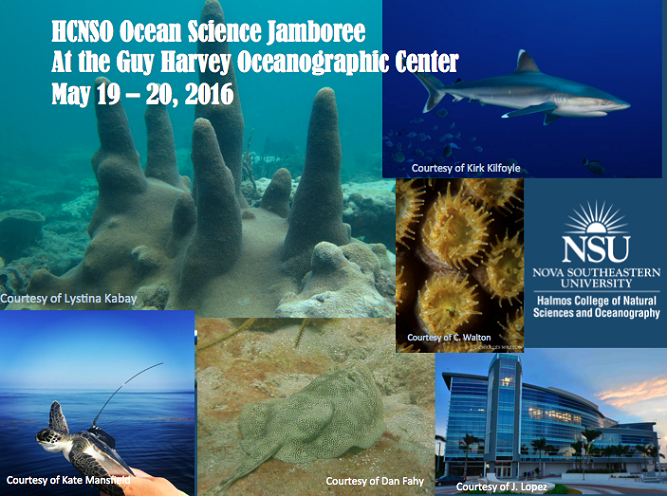Using regression-based effect size meta-analysis to investigate coral responses to climate change
Location
Guy Harvey Oceanographic Center Facility
Start
5-20-2016 11:30 AM
End
5-20-2016 11:45 AM
Abstract
Attempts to quantify the effects of ocean acidification and warming (OAW) on scleractinian corals by means of ex situ experiments provide a growing body of response measurements. However, placing empirical results into an ecological context is difficult, owing to large variations that reflect both natural heterogeneity and scientific bias. The goal of this study is to address the observed heterogeneity in three physiological responses (larval survival, settlement, and calcification) of reef building corals to elevated temperature and reduced aragonite saturation. To discern scientific bias and identify drivers of the remaining heterogeneity, 100 publications were analyzed using a combination of weighted mixed effects meta-regression and categorical effect size meta‑analysis. A linear regression model was applied to quantify the variation caused by differing stress levels across studies. The least squares predictions were then used to standardize individual study outcomes and weighted effect size meta-analysis was performed on original and standardized outcomes separately. On average, increased temperature significantly reduces larval survival, while ocean acidification impedes settlement and calcification. Significant differences were based on biological traits (genera and life cycle stage), environmental factors (climate and various characteristics of the collection site) and additional differences in experimental design (presence of particulate food, filter size and experimental duration). Standardizing outcomes to linear model predictions proved useful in discerning strong sources of scientific bias. This approach can inform policy and management on changes in coral community structure associated with the expected future intensification of OAW.
Using regression-based effect size meta-analysis to investigate coral responses to climate change
Guy Harvey Oceanographic Center Facility
Attempts to quantify the effects of ocean acidification and warming (OAW) on scleractinian corals by means of ex situ experiments provide a growing body of response measurements. However, placing empirical results into an ecological context is difficult, owing to large variations that reflect both natural heterogeneity and scientific bias. The goal of this study is to address the observed heterogeneity in three physiological responses (larval survival, settlement, and calcification) of reef building corals to elevated temperature and reduced aragonite saturation. To discern scientific bias and identify drivers of the remaining heterogeneity, 100 publications were analyzed using a combination of weighted mixed effects meta-regression and categorical effect size meta‑analysis. A linear regression model was applied to quantify the variation caused by differing stress levels across studies. The least squares predictions were then used to standardize individual study outcomes and weighted effect size meta-analysis was performed on original and standardized outcomes separately. On average, increased temperature significantly reduces larval survival, while ocean acidification impedes settlement and calcification. Significant differences were based on biological traits (genera and life cycle stage), environmental factors (climate and various characteristics of the collection site) and additional differences in experimental design (presence of particulate food, filter size and experimental duration). Standardizing outcomes to linear model predictions proved useful in discerning strong sources of scientific bias. This approach can inform policy and management on changes in coral community structure associated with the expected future intensification of OAW.


